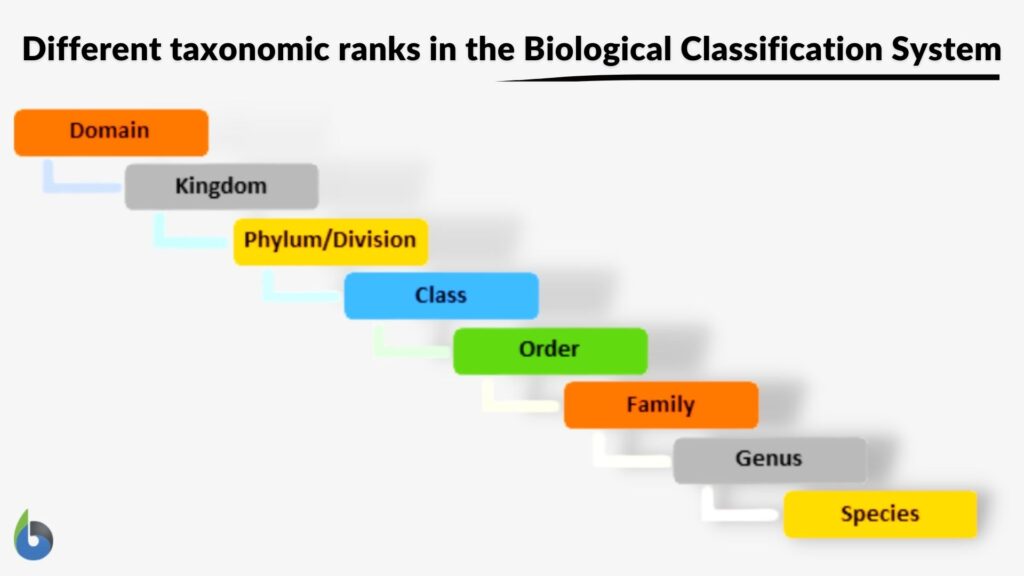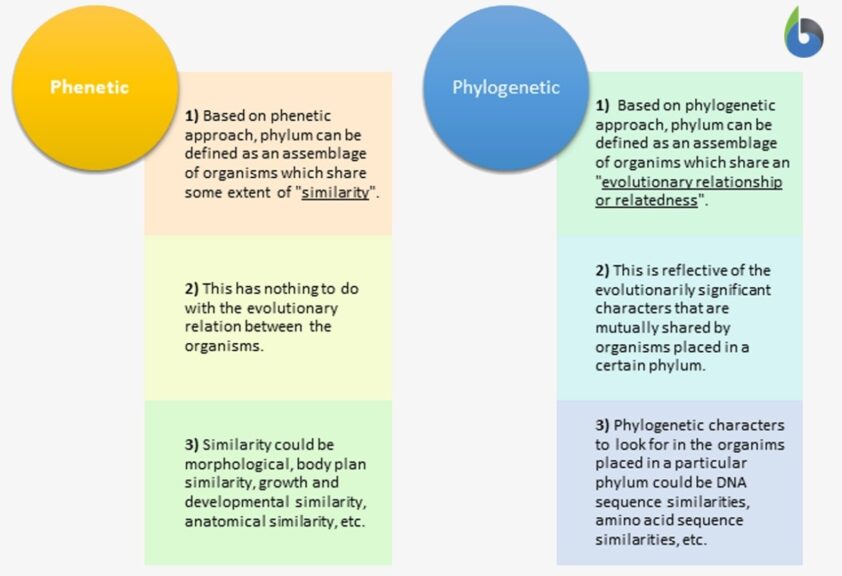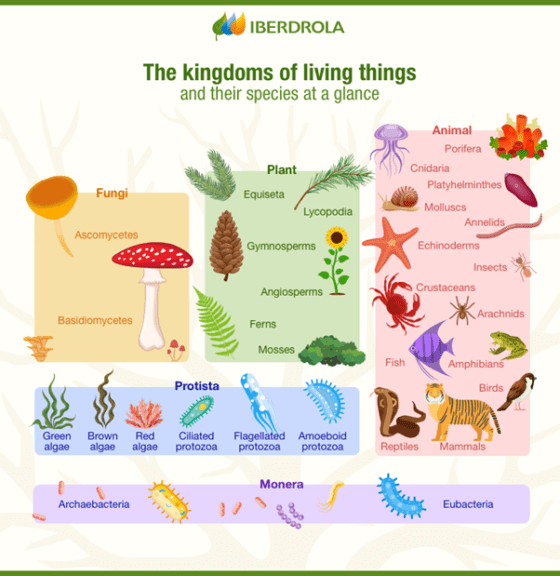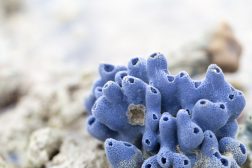
Phylum
n., plural: phyla
[ˈfaɪləm]
Definition: a major taxonomic rank below Kingdom
Table of Contents
Just like it is easy to identify and sort anything in the supermarkets when placed in the right section with proper display of name, price, and date of manufacture, similarly, it’s easy to study, identify and differentiate any biological species when the classification system brings order to the multitude of diversity inhabiting this planet.
Amongst the varied plethora of diversity, if something is common, it’s the “Biological Classification”. Many different taxonomists and naturalists, like Aristotle, Theophrastus, Dioscorides, Ernst Mayr, Carl Linnaeus, Whittaker, and Carl Woese have proposed different classification systems for the ease of studying the biological world.
There are various different taxonomic ranks that resemble the subsections of a supermarket. This helps in the quick identification of a species by aligning the characteristic features with the classified rank.
The main taxonomic ranks are as follows: Domain, Kingdom, Phylum/Division, Class, Order, Family, Genus, Species, and Subspecies. Among the different ranks, one special one is phylum. The definition of phylum in Science is “the assemblage of biological species on the basis of general body plan”.

Phylum Chordata is an example of a phylum. Would you like to learn more from our Expert? Join us and participate in our Forum discussion: What is phylum chordata?
Phylum Definition

The definition of phylum in Biology goes by “a taxonomic rank above class and below kingdom”. There are International Codes of Nomenclature that accept these taxonomic ranks as universal – meaning they are applicable on all living forms whether it be plant phylum, animal phylum, fungi phylum, protista phylum, or bacteria phylum. Many botanists prefer to use “Division” in place of “Phylum” but both are acceptable according to the International Code for Plant Nomenclature.
Ernst Haeckel coined the term “phylum” in 1866. Literally, phylum means a race or a tribe that’s different from others based on some characteristic features. It is derived from the Greek word “phylon” which has a relation to another word “phyle” meaning tribe. The plural of phylum is phyla (Note: there is no such word as phylums! Plural of phylum is phyla).
So, when asked what a phylum is, we can tell that it’s a classification level in the elaborative classification system that brings a lot of rationality when studying Biology.
There are 2 major ways in which we can explain the concept of phylum and define phylum in biology:

Biology Definition:
Phylum is a taxonomic rank below Kingdom and above Class in biological classification, especially of animals. In plants, the corresponding rank is Division. Example: Phylum Chordata includes Class Mammalia (mammals), Class Aves (birds), Class Ascidiacea (sea squirts), etc. These animals have notochords at some point in their life cycle. Etymology: Greek “phylon”, from “phyle”, meaning “tribe”. Compare: division
Phylum Examples
All living organisms have been placed in 5 major kingdoms according to Robert Whittaker. They are Monera, Protista, Fungi, Plants, and Animals. Whether it be plants or animals, the definition of “kingdom” remains the same, i.e. “a taxonomic rank that is above phylum and below domain”.
Phylum is the 3rd highest classification level according to Carl Woese’s 3-domain classification system and the 2nd highest classification level according to Whittaker’s 5-kingdom classification system. Each of these kingdoms encompasses many types of phylum.
Let’s take a look at them one by one to understand them better. The significance of the classification rank “phylum” in taxonomy should be clear by the end of this article.

Phyla in Kingdom Monera
Kingdom Monera entails both Eubacteria and Archaea. Although in the 3-domain system of Carl Woese, they are placed in different domains but in Whittaker’s 5-kingdom system, both are placed in the same kingdom. There are approximately 29 phyla in Eubacteria and 5 phyla in Archaea.
Some well-known phyla of the 29 phyla in Eubacteria are:
- Chlamydiae
- Cyanobacteria
- Actinobacteria
- Firmicutes
- Spirochetes
Phyla in Kingdom Protista
This is a polyphyletic taxon and the phyla placed under it has a very unstable position. On an approximate, there are nearly over 15 phyla in this kingdom, some of which are:
- Amoebozoa
- Ciliophora
- Euglenozoa (previously placed under phylum Thallophyta in Kingdom Plantae)
- Oomycota (previously placed under Kingdom Fungi)
Phyla in Kingdom Fungi
There are 8 different phyla in this kingdom namely:
- Ascomycota
- Basidiomycota
- Blastocladiomycota
- Chytridiomycota
- Glomeromycota
- Microsporidia
- Neocallimastigomycota
- Zygomycota

Phyla in Kingdom Plantae
Phylum in the plant kingdom has often been called “division” by botanists. Both are interchangeably used and accepted by the ICN. It was August W. Eichler in 1883 who divided the plant kingdom into 5 major plant phyla/divisions. He was the same person who coined the term “division”, which still remains in wide usage in plants, fungi, and algae studies.
5 phyla/divisions are:
- Thallophyta (Charophyta, Chlorophyta, Glaucophyta, Rhodophyta)
- Bryophyta (Anthocerotophyta, Bryophyta, Marchantiophyta, Hepatophyta)
- Pteridophyta (Polypodiophyta, Monilophyta, Lycopodiophyta, Lycophyta)
- Gymnosperms (Cycadophyta, Ginkgophyta, Pinophyta, Coniferophyta, Gnetophyta)
- Angiosperms (Magnoliophyta)
See also: Plant Biology Tutorial


Phyla in Kingdom Animalia
This is an extensive kingdom with over 30 animal phyla. Some of the phyla are:
- Porifera
- Cnidaria
- Platyhelminthes
- Nematoda
- Annelida
- Mollusca
- Arthropoda
- Echinodermata
(Note: 1-8 are the invertebrate phyla) - Chordata (large phylum with all the vertebrates)
Phylum Chordata

This phylum has some characteristic features:
- A notochord in at least one of their life stages
- A dorsal nerve cord
- A post-anal tail
- Pharyngeal slits
This is a very diverse animal phylum comprising the genus of humans– Homo sapiens sapiens (hence human phylum is Chordata!)
To learn more about chordates, read our article here- Chordata.
Join our discussion here: What is phylum chordata? to learn more about this group of animals! We’d be happy to hear from you!
Phylum Porifera
| Phylum Porifera | |
|---|---|
| Common Feature | Basic cellular-level structure with no distinct tissues or organs, pore bearers, commonly marine, presence of collar cells, have spicules and spongin for support |
| Number of germ layers | 2 (therefore diploblastic) |
| Symmetry | No body plane symmetry (asymmetric) |
| Cephalization | None |
| Coelom | None (Acoelomate) |
| Digestion | Heterotrophic filter feeders, Intracellular (have incurrent and excurrent pores) |
| Respiration | Diffusion via choanocytes |
| Circulation | No circulatory system |
| Excretion | No excretory system (via diffusion only) |
| Nervous System | None |
| Reproduction | Asexual budding/regeneration, if sexual (mostly hermaphrodite individuals and external fertilization) |
Phylum Cnidaria
| Phylum Cnidaria | |
|---|---|
| Common Feature | Stinging cells, as stinging tentacles are characteristic features, tissue-level structure, life cycle has both asexual polyp and sexual medusa stages |
| Number of germ layers | 2 (therefore diploblastic) |
| Symmetry | Radial/Biradial |
| Cephalization | Absent |
| Coelom | None (Acoelomate) |
| Digestion | Incomplete gastrovascular cavity |
| Respiration | Via diffusion |
| Circulation | No circulatory system |
| Excretion | No excretory system (via diffusion only) |
| Nervous System | Nerve net present |
| Reproduction | Asexual budding, if sexual (mostly sexes are distinct and external fertilization) |
Phylum Platyhelminthes
| Phylum Platyhelminthes | |
|---|---|
| Common Feature | Flatworms have flattened bodies, concept of cephalization starts from this phylum of Animalia, developmental mode- protostome, parthenogenesis is common, Organ-level structure, many are parasitic |
| Number of germ layers | 3 (therefore triploblastic) |
| Number of germ layers | Bilateral |
| Cephalization | Present |
| Coelom | None (Acoelomate) |
| Digestion | Incomplete gastrovascular cavity with the muscular pharynx |
| Respiration | Via diffusion |
| Circulation | No circulatory system |
| Excretion | Presence of flame cells that filter body fluids |
| Nervous System | Ganglia, double nerve cord (also called nerve ladder) and sense organs |
| Reproduction | Asexual fission/regeneration, if sexual (mostly hermaphrodite individuals and external fertilization |
Phylum Mollusca
| Phylum Mollusca | |
|---|---|
| Common Feature | Soft-bodied mantles, have 3 major body parts (head, foot, visceral mass), have radula-rasping tongue, developmental mode- protostome, organ-level structure, hydrostatic skeleton (mostly have a shell), parthenogenesis is common, cephalopods are the most intelligent invertebrates! |
| Number of germ layers | 3 (therefore triploblastic) |
| Number of germ layers | Bilateral |
| Cephalization | Present |
| Coelom | Coelomate |
| Digestion | Complete (mouth, esophagus, stomach, intestine, anus) |
| Respiration | Via gills or lungs |
| Circulation | Open system with heart, blood vessels and sinuses |
| Excretion | Nephridia, simple kidney |
| Nervous System | Ganglia, multiple nerve cords and sense organs |
| Reproduction | Sexual (mostly distinct sexes individuals and external fertilization observed) |
Phylum Arthropoda
| Phylum Arthropoda | |
|---|---|
| Common Feature | First time exoskeleton observed in invertebrates, molting occurs, body divided in head-thorax-abdomen, metamorphosis is characteristic of this phylum, jointed foot observed, developmental mode- protostome, organ-level structure, have paired muscles with tendons, great number of species, some undergo parthenogenesis |
| Number of germ layers | 3 (therefore triploblastic) |
| Number of germ layers | Bilateral |
| Cephalization | Present |
| Coelom | Coelomate |
| Digestion | Complete (mouth, esophagus, stomach, intestine, anus) |
| Respiration | Gills in aquatic species, book lungs/trachea and spiracles in land species |
| Circulation | Dorsal heart and open circulatory system |
| Excretion | Green glands, simple kidneys, malpighian tubules |
| Nervous System | Brain, ventral nerve cord, statocyst (balancing organ), sensory hair |
| Reproduction | Sexual (mostly distinct sexes individuals and internal/external fertilization observed) |
So, now that we have listed a number of phyla from different kingdoms of the biological world, we can explain what does phylum means and how this entire classification system helps in developing an easy understanding of various species.
Interesting Fact
I think all of you would have watched “Sponge Bob Square Pants”, the famous TV cartoon show. If you have watched it, then you would have also encountered the protagonist Sponge Bob’s enemy “the plankton” basically zooplankton. On the basis of their habitat, can you now tell which Phylum do these 2 characters belong to????
Yes, SpongeBob is a member of Phylum Porifera and plankton is a member of Phylum Protozoa. So, next time you see any cartoon or web series that’s animated, you can easily identify from which biological organism the different characters are inspired from- if you are thorough with the taxonomy and its magnanimous outlooks…. 🙂

Try to answer the quiz below to check what you have learned so far about phyla.
References
- Haeckel E. (1866). Generelle Morphologie der Organismen [The General Morphology of Organisms}, 1: 28–29
- Valentine J.W. (2004). On the Origin of Phyla. Chicago: University of Chicago Press.
- Barnes R.D. (1980). Invertebrate Zoology. W. B. Saunders Company, Philadelphia.
- Margulis L., Schwartz K.V., Dolan M. (1994). The Illustrated Five Kingdoms: A Guide To The Diversity Of Life On Earth. HarperCollins College Publishers, New York.
©BiologyOnline.com. Content provided and moderated by Biology Online Editors.





